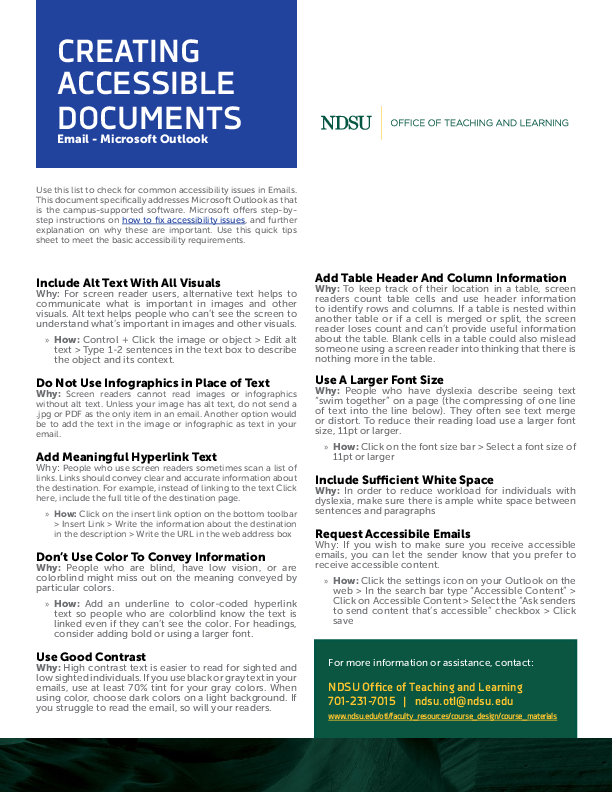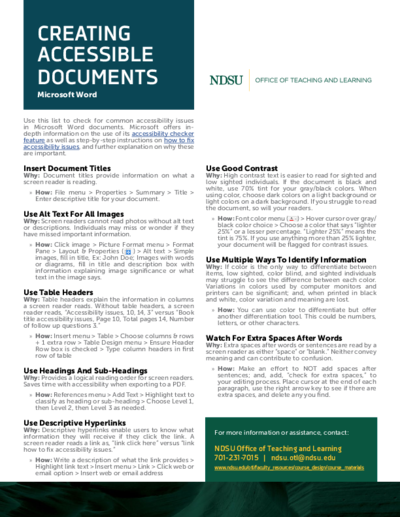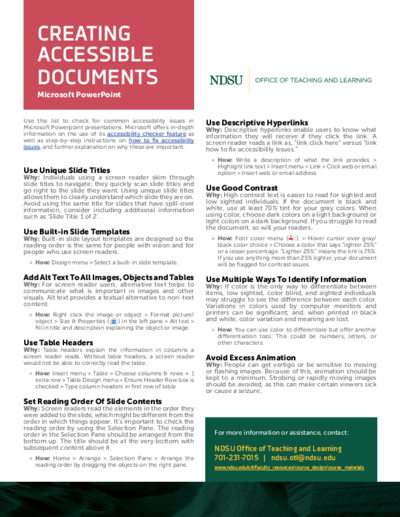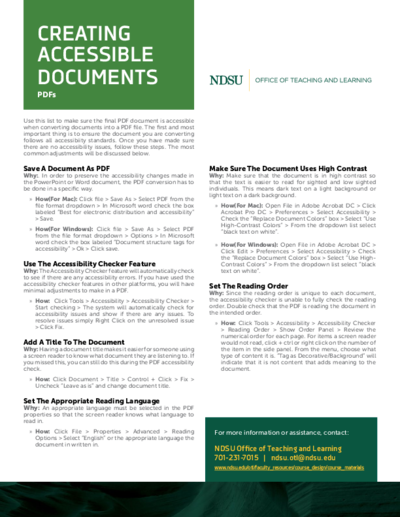Principles of UDL
Universal Design for Learning (UDL) in higher education was developed by the Center for Applied Special Technology (CAST) in 1984 by applying universal design (an architectural framework) to curriculum reform. Based on the work of CAST three brain networks were identified that are an integral part of learning:
- affective
- recognition
- strategic
Though our brains all share these networks, how they are used by each individual is different. By recognizing this in your teaching, and applying UDL guidelines and strategies in your course you help to ensure accessibility, diversity and inclusion for all students.
Learn more about the principles of UDL and why and how to incorporate them into your classroom. Take away strategies you can use to begin the process of making your course equitable, inclusive and accessible.
This is the first video in the Universal Design for Learning in Higher Education instructional series.
Video
In this instructional video NDSU staff lay the ground work for Universal Design for Learning in higher education.
View slideshow in Powerpoint | PDF | Audio(MP3)
Resources
Here is a list of resources for designing your course using the principles of universal design.
Books
Printables
- Tip Sheets for Creating Accessible Documents | Use these tip sheets as a checklist to ensure the documents used for your class meet accessibility standards. Also be sure to check each document's accessibility indicator in Blackboard (looks like a speedometer). Click on the speedometer for your document's accessibility score and view suggestions for improvement.

Emails: Microsoft Outlook
View in
PDF | Audio(MP3)

Microsoft Word
View in
PDF | Audio(MP3)

Microsoft PowerPoint
View in
PDF | Audio(MP3)

PDFs
View in
PDF | Audio(MP3)


